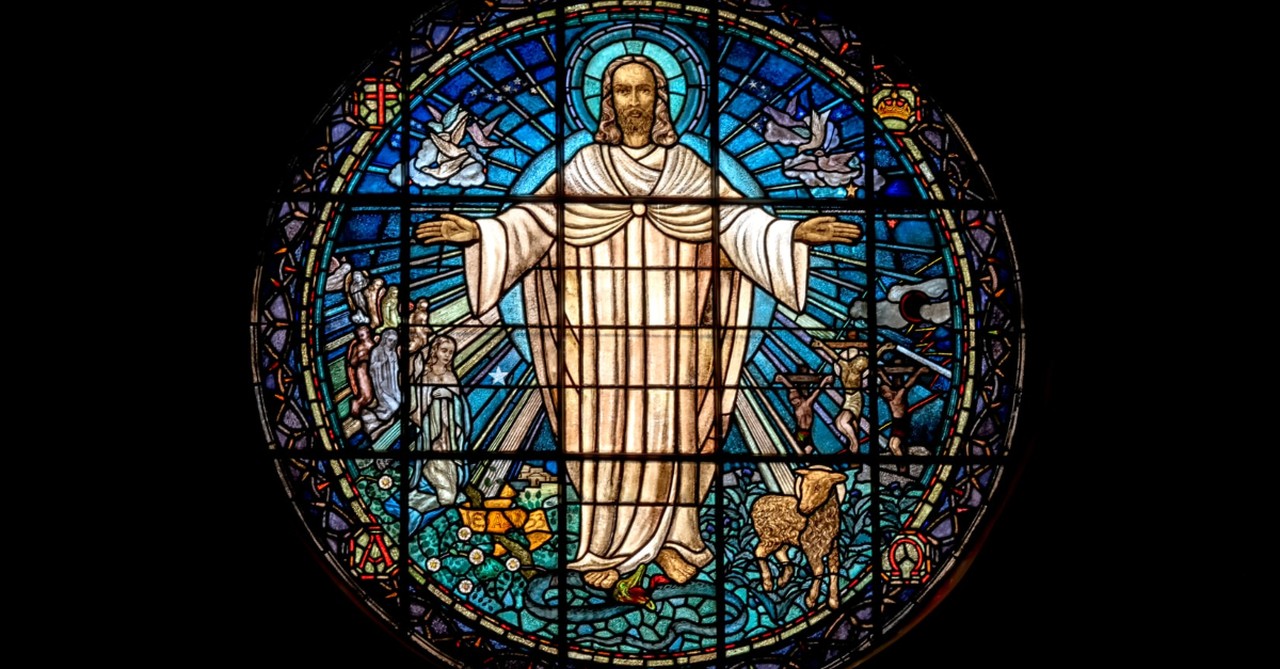5 Popular Worship Songs and the Inspiring Stories behind Them

“Sing to the Lord, praise His name, proclaim His salvation day after day” (Psalm 96:2). So declared King David, the author of most of the songs in the Old Testament hymnbook—the Psalms.
From King David on, writers and composers have continued to string together words and musical notes to proclaim the truth of God through song, and some of them have amazing stories that led to their creation!
Here are the inspiring stories behind 5 of the most well-known hymns and worship songs.
Photo Credit: ©Getty Images/Jantanee Rungpranomkorn
1. "It Is Well with My Soul" by Horatio Spafford

1. "It Is Well with My Soul" by Horatio Spafford
SLIDE 1 OF 5
The lyrics to this uplifting hymn, ironically, arose from a series of tragedies suffered in the 1800s by Horatio Spafford, a wealthy Chicago-based businessman and attorney. First, in 1871, the great Chicago fire destroyed most of Spafford’s real estate investments, leading Spafford to lose his life savings.
Two years later in 1873, Spafford, his wife, and their four daughters booked passage on an ocean liner sailing to Europe. Spafford had a last-minute change of plans due to business matters and never boarded the ship. While at sea, the ship was struck by another vessel and sank. Spafford’s wife survived, but all four of their daughters drowned.
When he received news of the tragedy, Spafford boarded the next available ship to join his grieving wife. During his voyage, the ship’s captain identified for Spafford the approximate area where the shipwreck had occurred and his daughters had drowned. The painful events led Spafford to pen a hymn confirming his continued faith in God. Among the hymn’s most poignant lyrics are:
When peace, like a river, attendeth my way,
When sorrows like sea billows roll;
Whatever my lot, Thou has taught me to say,
It is well, it is well, with my soul.
In 1881 and despite their devastating personal loss, Spafford and his wife continued to reflect their devotion to God by moving to Jerusalem to serve the needy and establish hospitals.
His incredible faith created this meditation for us all, that no matter what horrible circumstances we face, we can be at peace knowing God is sovereign and his love is constant.
Photo Credit: ©GettyImages/Mike Powell
2. “Were You There,” Authorship Unknown

2. “Were You There,” Authorship Unknown
SLIDE 2 OF 5
The first publication of this stirring spiritual appeared in 1899 in William E. Barton’s Old Plantation Hymns, a commentary on spirituals. Barton states in his book that he first heard this spiritual sung “in the South” without mentioning further specifics. However, Barton does note that the song likely originated in the African American slave community.
Further research on the spiritual’s origin confirms that its roots are impossible to trace, as the song wasn’t written by an individual songwriter but arose out of the collective slave experience of oppression and suffering.
In the lyrics Barton provided, the first stanza recalls the Lord’s Crucifixion by metaphorically asking the listener:
Were you there when they crucified my Lord?
Were you there when they crucified my Lord?
Oh! Sometimes it causes me to tremble, tremble, tremble.
Were you there when they crucified my Lord?
The subsequent three stanzas likewise recall Jesus’s being nailed to the Cross, being pierced in the side, and the later refusal of the sun to shine after the Crucifixion. Variations of this spiritual add a fifth and sixth stanza about the laying of the Lord in the tomb and the raising of the Lord from the tomb.
These series of questions about Jesus’s Passion obviously aren’t meant to be taken literally. Instead, the singer is asking the listener to embrace the gravity and purpose of the Crucifixion and, through doing so, be transformed in the here and now.
The spiritual has become one of the most prominent spirituals with African American roots, and is often sung on Good Friday during Lent.
Photo Credit: ©GettyImages/monkeybusinessimages
3. “Holy, Holy, Holy,” by Reginald Heber

3. “Holy, Holy, Holy,” by Reginald Heber
SLIDE 3 OF 5
This timeless hymn wasn’t discovered until after the death of its composer, Reginald Heber. Heber was a poet from a wealthy English family. He entered religious life first as a church vicar in England and then, in 1823, as the Anglican Bishop of Kolkata in India.
During this time of spreading the Gospel, Heber composed “Holy, Holy, Holy,” praising God and the Holy Trinity.
This hymn’s lyrics were inspired by the prophet Isaiah’s vision of God’s heavenly court. In particular, the prophet saw God seated on an exalted throne surrounded by angels called the seraphim. In revering God, the heavenly angels repeatedly proclaimed, “Holy, holy, holy is the Lord Almighty; the whole earth is full of His glory” (Isaiah 6:3; see also Revelation 4:8).
Heber was the first person to assemble a hymnal in which hymns were ordered around the church calendar. He wrote “Holy, Holy, Holy” to be sung specifically on Trinity Sunday, a day that celebrates the doctrine of the Holy Trinity. Heber died in 1826 and his widow found the unpublished hymn among Heber’s papers.
The hymn was published posthumously that year, and begins with the following well-known verses:
Holy, holy, holy! Lord God Almighty!
Early in the morning our song shall rise to thee.
Holy, holy, holy! Merciful and mighty,
God in three persons, blessed Trinity!
The symbolism of three is repeated throughout the hymn, as seen in the verse praising God for being “holy, merciful, and mighty,” and the verse adoring God for his wondrous works in the “earth and sky and sea.” Years after its publication, the composer John Dykes composed the tune “Nicaea” to accompany Heber’s “Holy, Holy, Holy.”
The hymn text and its accompanying music were first published together in 1861.
Photo Credit: ©GettyImages/ipopba
4. “Jesus Loves Me,” by Anna Bartlett Warner

4. “Jesus Loves Me,” by Anna Bartlett Warner
SLIDE 4 OF 5
This catchy hymn is especially popular with children in churches worldwide. The hymn was written in 1859 first as a poem by American writer Anna Bartlett Warner, who wrote the poem at her sister’s request.
Specifically, Warner’s sister—also a writer—was writing a novel and asked Warner to write a poem to be read to a fictional dying child in the book.
Ironically, out of that request for the comfort of a fictional child arose one of the most beloved children’s hymns of all time. The hymn assures actual children of Jesus’s unconditional love for them with the opening verses:
Jesus loves me! This I know,
For the Bible tells me so;
Little ones to Him belong;
They are weak, but He is strong.
The music to this hymn’s lyrics was composed in 1861 by musician William Bradbury, who added the refrain, “Yes, Jesus loves me,” sung in today’s version of the song. Notably, the simple yet direct lyrics of this hymn make it a favorite as one of the first hymns that Christian missionaries teach to new converts.
Aside from being a writer of Christian hymns, Warner and her sister also taught Bible study classes for cadets at West Point for over 40 years. One distinguished student of the Warner sisters was General Dwight D. Eisenhower. Upon the sisters’ deaths, their funeral services were conducted with military honors.
To date, the sisters are the only civilians to be buried at West Point’s military cemetery. Warner’s former family home is now a museum on the grounds of the United States Military Academy.
Photo Credit: ©Unsplash
5. “Mary, Did You Know?,” by Mark Lowry

5. “Mary, Did You Know?,” by Mark Lowry
SLIDE 5 OF 5
The only contemporary song on this list, “Mary, Did You Know?” has quickly become a modern Christian classic. The lyrics, written in 1984 by American singer-songwriter and comedian Mark Lowry, tenderly ask Mother Mary if she knew how magnificent a role her newborn son Jesus would play in history and in the salvation of humanity.
Lowry wrote the lyrics to this song after being asked to write a script for his church’s Christmas play. In writing the lyrics, Lowry focused on questions he himself would like to ask Jesus’s mother about what she knew of her son’s future ministry.
The questions to Mary were presented in between the scenes of the church’s Christmas play. Lowry later teamed up with musician Buddy Greene, who wrote the music that now accompany the lyrics.
Building in intensity, the song commences by asking Mary to what extent she knew that her baby boy would grow up to walk on water, heal the blind and deaf, and give life to the dead. The song closes with questions centering on its most triumphant imagery:
Mary, did you know
That your baby boy is Lord of all creation?
Mary did you know
That your baby boy will one day rule the nations?
Did you know
That your baby boy is Heaven’s perfect Lamb?
This sleeping child you’re holding
Is the great I Am?
Importantly, the questions to Mary go unanswered in the song. This invites the listener to consider for himself how much the young mother might have known of her divine son’s power and purpose. “Mary, Did You Know?” has been recorded by various artists from diverse musical genres.
Different versions of the song have reached the top ten in the Billboard R&B and Holiday charts.
Every worship song has a special story behind it just by coming from the heart of a worshipper. I hope learning these stories helps you connect deeper to God and appreciate amazing the gift of music.
Photo Credit: ©GettyImages/KristiLinton
Dolores Smyth is a nationally published faith and parenting writer. She draws inspiration for her writing from everyday life. Connect with her over Twitter @byDoloresSmyth.
Originally published November 20, 2025.









